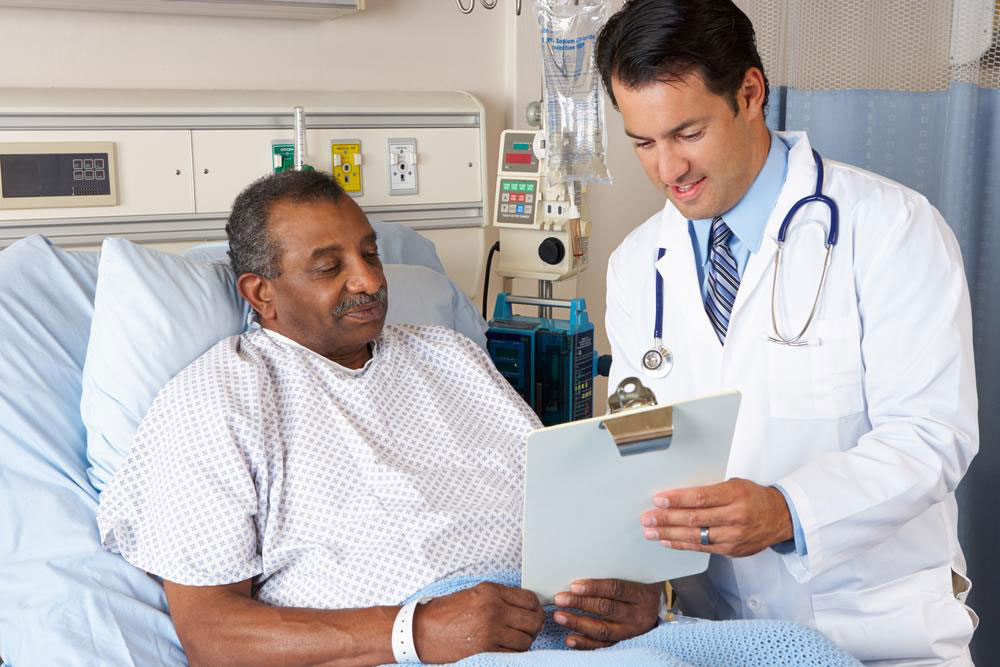Bladder cancer – Top signs and symptoms

Bladder cancer is a relatively common but often treatable form of cancer. It typically begins in the lining of the bladder cells and can manifest with various signs and symptoms. Early detection is paramount for successful treatment and management of the condition. This is why understanding the signs and symptoms of bladder cancer is essential. Below are some of the common and rare symptoms of bladder cancer in adults and children.
Common signs of bladder cancer in adults
Hematuria (Blood in urine)
The most common sign of bladder cancer is hematuria. It may present as pink, red, or even dark brown urine. Blood in the urine may be intermittent, and individuals may not always experience pain or discomfort.
Frequent urination
Bladder cancer can irritate the bladder lining, leading to increased frequency of urination. Patients may need to urinate more often than usual, even when the bladder is not full.
Painful urination
Some individuals with bladder cancer may experience pain or a burning sensation during urination. This discomfort can be similar to the symptoms of a urinary tract infection.
Urgency to pee
Bladder cancer can also cause a sense of urgency to urinate, where individuals must empty their bladder immediately, even if it’s not full.
Pelvic pain
In some cases, bladder cancer can cause extreme discomfort or pain in the lower abdomen, where the pain may be persistent or intermittent.
Back pain
Advanced bladder cancer can spread to other body parts, including the back. Back pain may indicate that the cancer has reached a more advanced stage.
Shedding of kilos and fatigue
As with many cancers, unexplained weight loss and fatigue can be associated with advanced bladder cancer. These symptoms are typically seen when the cancer has progressed.
Rare signs of bladder cancer in adults
While the symptoms mentioned above are the most common indicators of bladder cancer, some rare signs may also occur, such as:
Lower leg swelling
One of the less common signs of bladder cancer is lower leg swelling, often called peripheral edema. This occurs when the cancer obstructs urine flow from the kidneys to the bladder. Excess fluid can accumulate in the lower extremities, leading to swelling in the legs, ankles, or feet. While lower leg swelling can result from various medical conditions, including heart and kidney problems, its association with bladder cancer should not be overlooked.
Bone pain
Bladder cancer can progress and metastasize, spreading to other body parts, including the bones. When cancer cells invade the bones, it can cause bone pain. The pain can be localized to a specific area or spread throughout the body. Bone pain associated with bladder cancer often occurs in the pelvis, spine, or long bones like the arms and legs. While bone pain can have multiple causes, any unexplained or persistent bone pain should prompt further evaluation by a healthcare professional.
Anemia
A low red blood cell count characterizes anemia and is another rare sign of bladder cancer. The development of anemia in bladder cancer patients is often related to chronic bleeding within the urinary tract. Hematuria (blood in urine) can be so subtle that it may not be immediately noticeable. Still, it can lead to fewer red blood cells over time, resulting in anemia. Anemia may include weakness, fatigue, and pale skin. If it is detected, it should be thoroughly investigated to determine its underlying cause, including bladder cancer.
Abdominal mass
In some cases of bladder cancer, mainly when the tumor has grown large or has invaded nearby tissues, an abdominal mass may be palpable during a physical examination. A healthcare provider can feel an abdominal mass when pressing gently on the patient’s abdomen. An abdominal mass is typically a more advanced sign of bladder cancer and may indicate a need for further imaging studies and evaluation to assess the extent of the disease.
Bladder cancer signs in children
While bladder cancer is less common in children than adults, it can still occur. The signs of bladder cancer in children may differ from those in adults and can be challenging to identify. Some potential signs include:
Hematuria
Blood in the urine is a significant indicator of bladder cancer in children, just as in adults. A healthcare professional should always evaluate it.
Frequent urination
Children with bladder cancer may experience frequent urination or a sudden, urgent need to urinate.
Pain or discomfort
Some children with bladder cancer may complain of discomfort in the lower abdomen, back, or pelvis.
Bedwetting
While bedwetting is common in young children, sudden or persistent bedwetting in older children without a history of it could indicate an underlying issue, including bladder cancer.
Urinary Tract Infections (UTIs)
Repeated UTIs in children, especially if they are not responding to treatment or if there are other concerning symptoms, should be investigated further.
It’s important to note that many of these symptoms can be caused by various other conditions, and one or more of these signs do not necessarily mean a person has bladder cancer. However, if any of these symptoms persist or worsen, it’s crucial to consult a healthcare professional for a thorough evaluation and diagnosis.
Recognizing the common signs and awareness of rare signs can aid in early diagnosis and intervention. Signs such as bedwetting and unexplained UTIs should be taken seriously in children. Regular check-ups and screenings are also essential for at-risk individuals, such as those with a family history of the disease.
If cancer is diagnosed, helping one relieve symptoms remains the topmost priority of care and treatment. The managing of symptoms is also known as palliative care or supportive care. It enables individuals with cancer to join support groups to discuss their condition with others and receive guidance and support to manage their condition better.